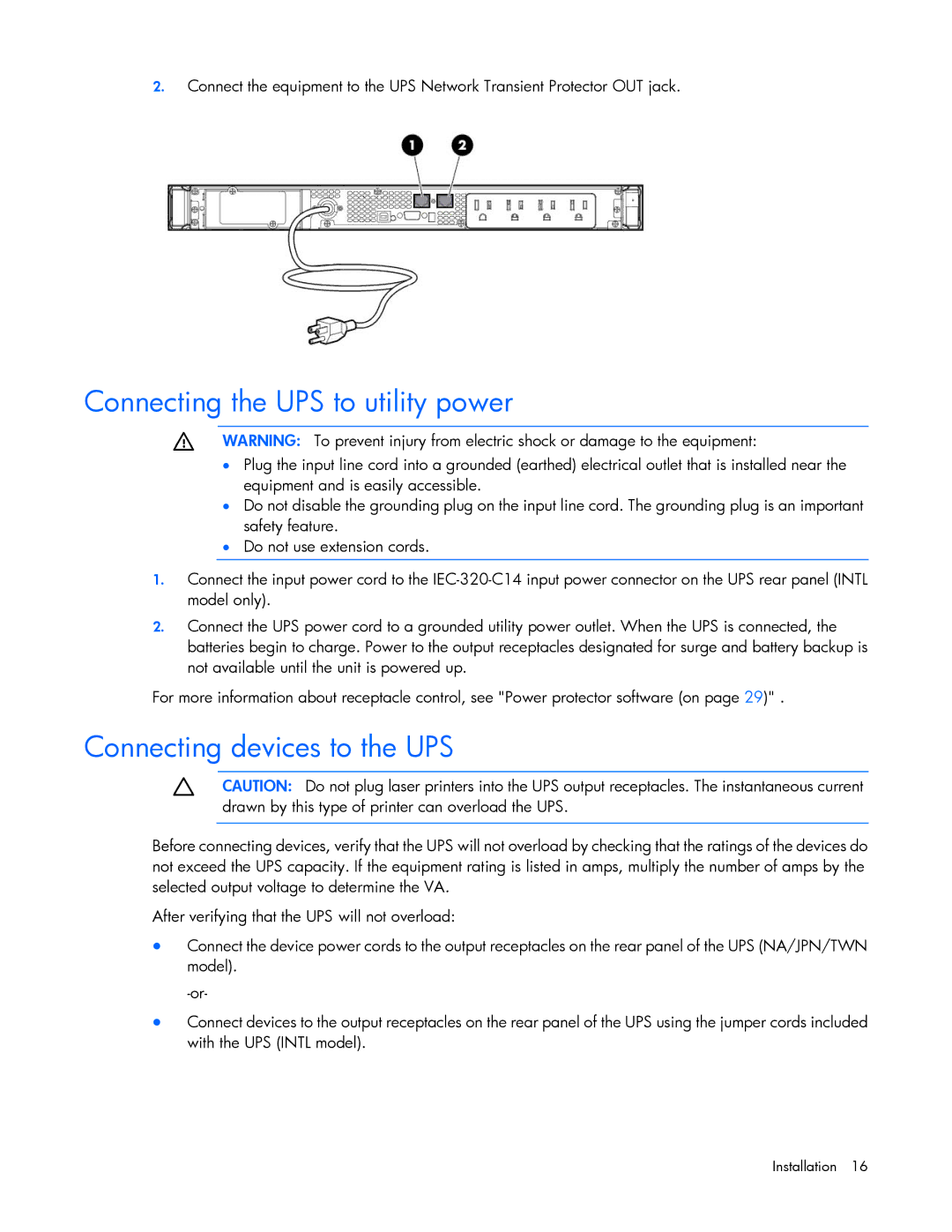
2.Connect the equipment to the UPS Network Transient Protector OUT jack.
Connecting the UPS to utility power
WARNING: To prevent injury from electric shock or damage to the equipment:
•Plug the input line cord into a grounded (earthed) electrical outlet that is installed near the equipment and is easily accessible.
•Do not disable the grounding plug on the input line cord. The grounding plug is an important safety feature.
•Do not use extension cords.
1.Connect the input power cord to the
2.Connect the UPS power cord to a grounded utility power outlet. When the UPS is connected, the batteries begin to charge. Power to the output receptacles designated for surge and battery backup is not available until the unit is powered up.
For more information about receptacle control, see "Power protector software (on page 29)" .
Connecting devices to the UPS
CAUTION: Do not plug laser printers into the UPS output receptacles. The instantaneous current drawn by this type of printer can overload the UPS.
Before connecting devices, verify that the UPS will not overload by checking that the ratings of the devices do not exceed the UPS capacity. If the equipment rating is listed in amps, multiply the number of amps by the selected output voltage to determine the VA.
After verifying that the UPS will not overload:
•Connect the device power cords to the output receptacles on the rear panel of the UPS (NA/JPN/TWN model).
•Connect devices to the output receptacles on the rear panel of the UPS using the jumper cords included with the UPS (INTL model).
Installation 16
